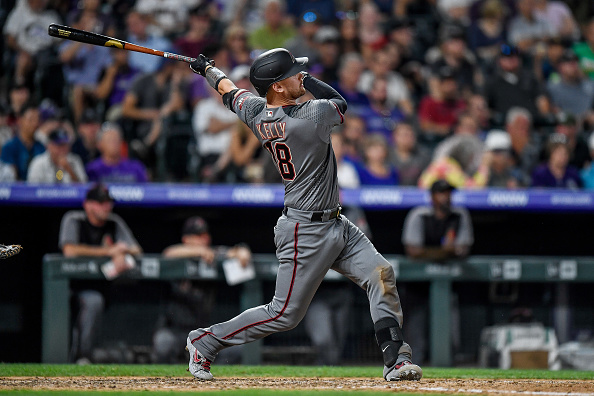Every year, catcher provides a dearth of options with upside. After a rough debut in stints with the Cardinals, Carson Kelly found a path to playing time and success this year in Arizona. In his 82nd game, Kelly went 1-for-2 hitting his 17th home run along with drawing two walks. He’s displayed strong plate discipline metrics with power upside after gaining his footing in early May. Yet, fantasy owners seem to gloss over his production to this point.
During his last 26 starts, according to the Diamondbacks game notes on MLB.com, Kelly’s 27 for his last 88 (.307) with seven doubles, nine home runs, 18 RBI and 15 walks. On the season, he’s racked up 63 hits with 34 of them resulting in extra-bases (17 doubles, 17 home runs). Check out Kelly’s ranks among catchers, with at least 150 plate appearances, since May fourth:
First in home runs (17), isolated power (.343), average (.298), on-base percentage (.403), slugging percentage (.640), weighted on-base average (.415) and weighted runs created plus (156).
Second in walk rate (14.7 percent) and hard hit percentage (51.8)
Third in lowest swinging strike percentage (7.7 percent)
Fourth in home run per fly ball rate (25 percent)
Tied for eighth in contact rate (81.1 percent)
Tied for 10th in runs (30)
Tied for 11th in RBI (35)
Knowing catchers production for fantasy usually comes after their defense develops, Kelly’s on the fast track yet flies below the radar. Using the May fourth date as a guide, here’s his heatmap of batted balls courtesy of Statcast:
Many young hitters find success pulling the ball for power, but Kelly’s approach suggests he’s comfortable hitting the ball to the opposite field. Yes, he does hit a majority of his home runs to his pull side, but being able to go with the pitch defers regression to the mean once the league adjusts to a hitter. Here’s Kelly’s spray chart of hits this season:
Compare this with his chart since May fourth with exit velocities instead of hits:
Beneath his surge, Kelly’s averaging an exit velocity of 90 MPH this year with a 15.3 launch angle. Currently, he’s slashing .270/.362/.562 with 33 runs, 17 home runs and 42 RBI but with a 50.8 hard hit rate according to Fangraphs. On Statcast, Kelly’s expected average of .246 and expected slugging of .473 can temper expectations, but delving further, it’s not as extreme as it seems. Kelly owns a .278 average versus fastballs with a .266 expected average and .520 expected slugging percentage. He’s benefited with a .400 batting average against off-speed pitches with an accompanying .294 expected average and .514 slugging compared to an unsustainable .833 slugging percent this season. Suffice it to say, Kelly will not continue to rake at this rate versus off-speed pitches, but his migration to the mean should not be extreme either.
It takes hitters time to prove a breakout can be sustained. Kelly’s 11.9 walk percentage compared to a 19 percent strikeout rate side in his favor. For the season, he’s produced a 80.5 contact percentage with a swinging strike rate of 8.1 percent and an impressive 89 percent Z-Contact (in the strike zone) percentage. This type of discipline with his burgeoning power could come with a reduced price in 2020 drafts, at least for now. Here are Kelly’s zone profiles with adjoining expected charts:
Catchers with 20 home run upside who do not kill a team’s batting average prove profitable for fantasy owners. In the midst of a torrid Aristides Aquino and Yordan Alvarez , Carson Kelly sits well below the radar in attention. But, savvy owners who track his finish this year could stand to benefit going forward by reaching for Kelly a round or two above his average draft position for production. Kelly’s displayed tremendous growth in his power since May fourth and if he finishes strong over the last six weeks, could return top-five value at his position next year without paying full retail. Pretty, pretty, good.
Statistical Credits:
BaseballSavant.com
Fangraphs.com
MLB.com - Game Note

